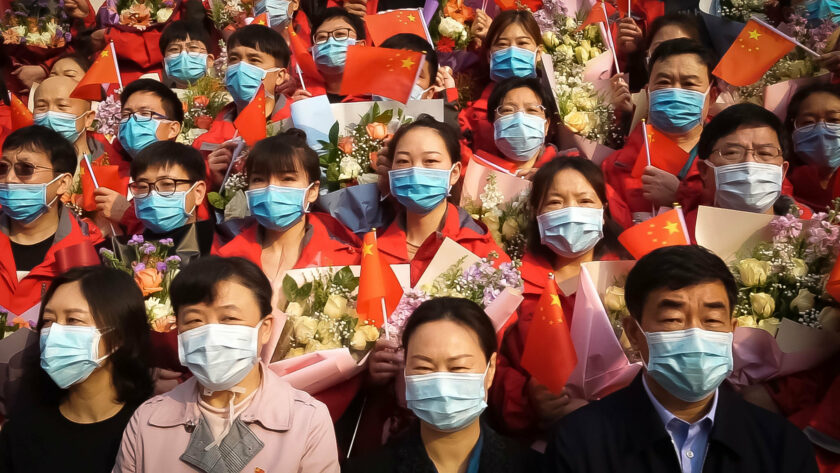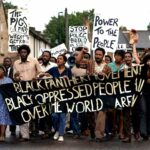Trigger Warning: This review concerns a documentary on the COVID-19 pandemic and may contain distressing content to some readers.
Editor-in-chief Tomi Haffety considers a documentary about the Chinese and American responses to the coronavirus pandemic.
Having never watched a documentary about a still ongoing event, my opinion of In the Same Breath is undoubtedly skewed to something of a more critical and sensitive tone. The 2021 documentary explores the response to the initial COVID-19 outbreak in Wuhan, as well as the reactionary behaviour of both China and America’s governments and citizens as they navigate this, for want of a better word, unprecedented situation.
In her previous work, Chinese-American filmmaker Nanfu Wang examined the impact of Chinese legislations such as the one Child Policy. After living in New Jersey for nine years, she offers a unique perspective on the experience of both authoritarian and democratic governance. The film opens with powerful scenes of Wuhan’s 2020 New Year’s Eve celebration set the scene for what ends up being an extremely harrowing and emotional watch. Seeing hordes of people chanting and singing together as they count down to what no one knew was going to be a most tumultuous year it is hard not to gasp at the idea of replicating the same celebration now, in the situation we still find ourselves in. The bright lights of the Wuhan metropolis light up the crowds as they break into a patriotic rendition of ‘My Motherland’. Suddenly cutting to Xi Jinping as he makes a speech declaring that 2020 will be a year of success for China and the Communist Party cements the sense of social cohesion and loyalty to the party and leadership.
Wang uses news headlines to outline the early announcement of the outbreak discovered by eight doctors, who first alerted people to the dangers of the virus, and were later punished for spreading the information – just one example of the dictatorial measurements that the Chinese government took in order to maintain its image of power. Although the eight scientists first exposed news of an outbreak on Boxing Day 2019, there was no mention of the virus at a January political conference in Wuhan and an unsettling collation of nine news anchors reading the same manufactured script reiterating that the virus cannot be spread through humans feels like a murky dystopian reminder that everyone seems to be in denial about the true impacts of COVID-19. The social media outcry over the virus contrasts with the silence of the Communist Party Conference, which includes no reference to it. Wang thereby draws our attention to the dichotomy between propaganda and the reality of a situation slowly becoming too difficult to handle.
Throughout the documentary, a focus on personal experience is paramount and the grief and powerlessness felt by victims, families and healthcare workers carry the film across the timeline of 2020. Separated from their children, parents are filmed struggling to say their final goodbyes and as the camera follows the emergency workers being forced to send patients home, we are confronted with the agonizing magnitude of the pandemic. Using three Wuhan-based filmmakers to capture life inside hospitals and the ghost town of locked-down Wuhan, Wang highlights the painful reality of living in a heavily-censored society. In Wuhan, Healthcare workers had to be approved by the government before being interviewed by the filmmakers and the Communist Party’s propaganda department portrayed the situation as a positive reflection of Chinese resilience.
The painfully familiar scene of doctors in hazmat suits with their names written in ink to retain some element of humanity highlights the severity of the situation in Wuhan. By offering a timeline of events, Wang mixes individual stories of loss with the broader bureaucratic decisions that shaped the government’s response both in China and America. Exploring the American reaction to COVID, the ignorance and denial of the true impact of COVID-19 are hard to watch when we are still feeling the consequences of the inadequate reaction to an invisible killer. Empty streets of New York city in lockdown emphasise the complete unpreparedness of the American healthcare system, which manifests itself in the trauma of healthcare workers who are left with feelings of loss and confusion at the lack of mitigation in place.
Wang does not fall short of her reputation as a scrutinising artist. In the Same Breath asks urgent questions about the difference between authoritarianism and democracy – if there is any difference at all. Taking place across the world, the anti-lockdown protests given a ten-minute slot in the documentary’s second act are somewhat laughable. The dangerous feeling of patriotism embedding itself in the American psyche mirrors the sentiment felt by Chinese people who still praise the Communist Party and go as far as thanking Xi Jinping for all he did. It is difficult to know what is being said out of fear of punishment, or whether this is the true rhetoric felt by the people most deeply affected by the government’s misinformation and propaganda.
In a powerful cyclical statement, the documentary ends with Wuhan’s 2021 New Year’s Eve celebration. Everything seems the same as the previous year and although so much has changed and so much has been lost, Wuhan continues to be praised for its response to COVID-19. In the Same Breath offers an intense insight into the remarkable global crisis that we are still experiencing. Because of this, I think it was in many ways too soon to be watching such a detailed depiction of the pandemic, and such a sensitive documentary could be better analysed with the privilege of hindsight. Nonetheless, Wang asks crucial questions of what having freedom really means and how this ‘freedom’ manifests itself in times of crisis and struggle.




